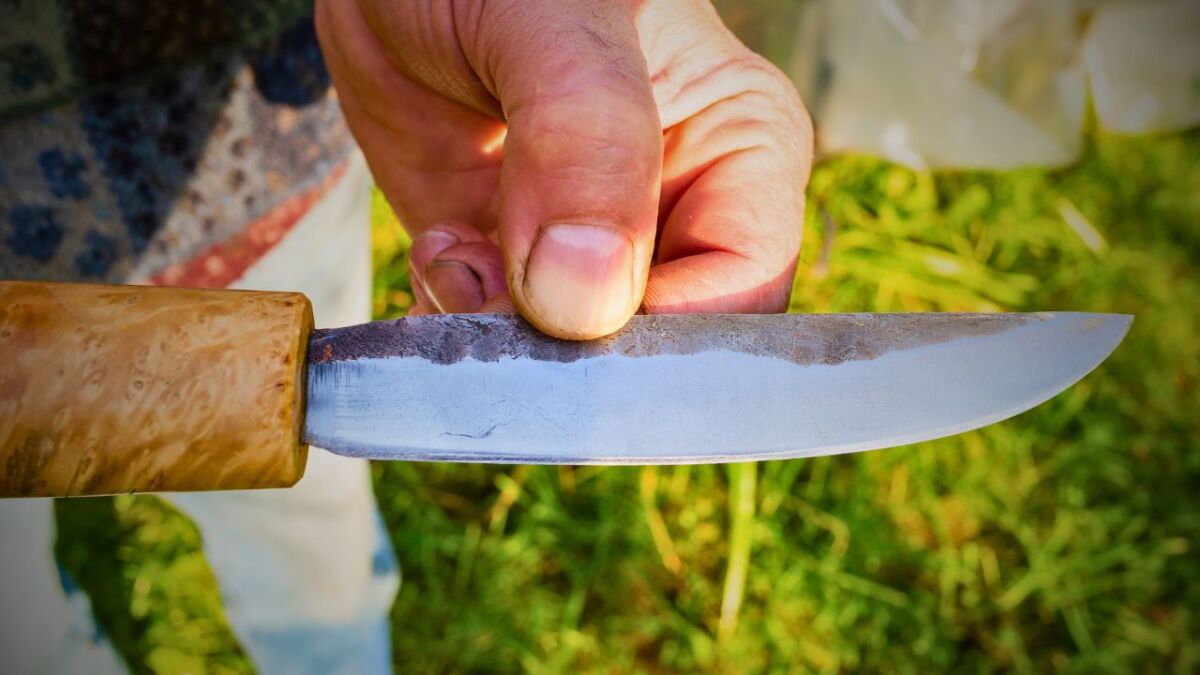
What hardness should a knife have? - HRC simply explained
👉 The key facts from this guide
- The hardness of a knife is super important. It tells you how well the knife cuts and how long it lasts.
- There is a scale called the Rockwell scale that measures hardness. It ranges from 50 to 70.
- For outdoor knives, a hardness of 58 to 62 HRC is good. This keeps your knife sharp and prevents it from breaking.
- For bushcraft knives, a hardness of 56 to 58 HRC is great. The knife remains sharp and is still tough.
- For hunting knives, a hardness of 60 to 62 HRC is excellent. The knife stays sharp and is strong enough for hunting.
- Once the knife is made, its hardness cannot be changed. So choose wisely!
Knives are an essential tool in many areas of life.
Whether in the kitchen, while camping, or in manual tasks, a good knife can make the work easier and more efficient.
But what hardness should a knife have to meet the requirements?
Maybe you were like me at the beginning: I had no idea what knife hardness meant.
In this article, we will delve into this question and shed light on all important aspects.
The Importance of Knife Hardness
The hardness of a knife is a crucial factor for its performance and durability. An optimal hardness ensures that the knife stays sharp, doesn't wear out easily, and has high edge retention.
Knives with insufficient hardness are less sharp and tend to dull faster.
On the other hand, knives can become brittle and break more easily if they have too high of a hardness. So it is essential to find the right balance for the right application.
What hardness should a knife have?
The ideal hardness of a knife depends on its intended use. For outdoor knives, a hardness of 55-58 HRC is recommended, for kitchen knives 58-60 HRC, and for hunting knives 56-59 HRC.
Depending on where and how you use your knife, the ideal hardness varies. Here is a practical table that will help you make the right choice:
| Knife type | Recommended Hardness | Why? |
|---|---|---|
| Outdoor knife | 55-58 HRC | Tough and versatile, good for all round use. |
| Bushcraft knife | 56-58 HRC | Hard, but resharpenable edge for a variety of tasks. |
| Survival Knife | 57-59 HRC | Perfect blend of edge retention and flexibility |
| Hunting Knife | 56-59 HRC | Balanced hardness for edge retention and flexibility. |
| Pocket knife | 55-60 HRC | Versatile and durable enough for everyday use. |
| EDC knife | 56-58 HRC | Optimal hardness and edge retention for everyday use. |
| Kitchen knife | 58-60 HRC | Sharp enough for precise cutting, but not too brittle. |
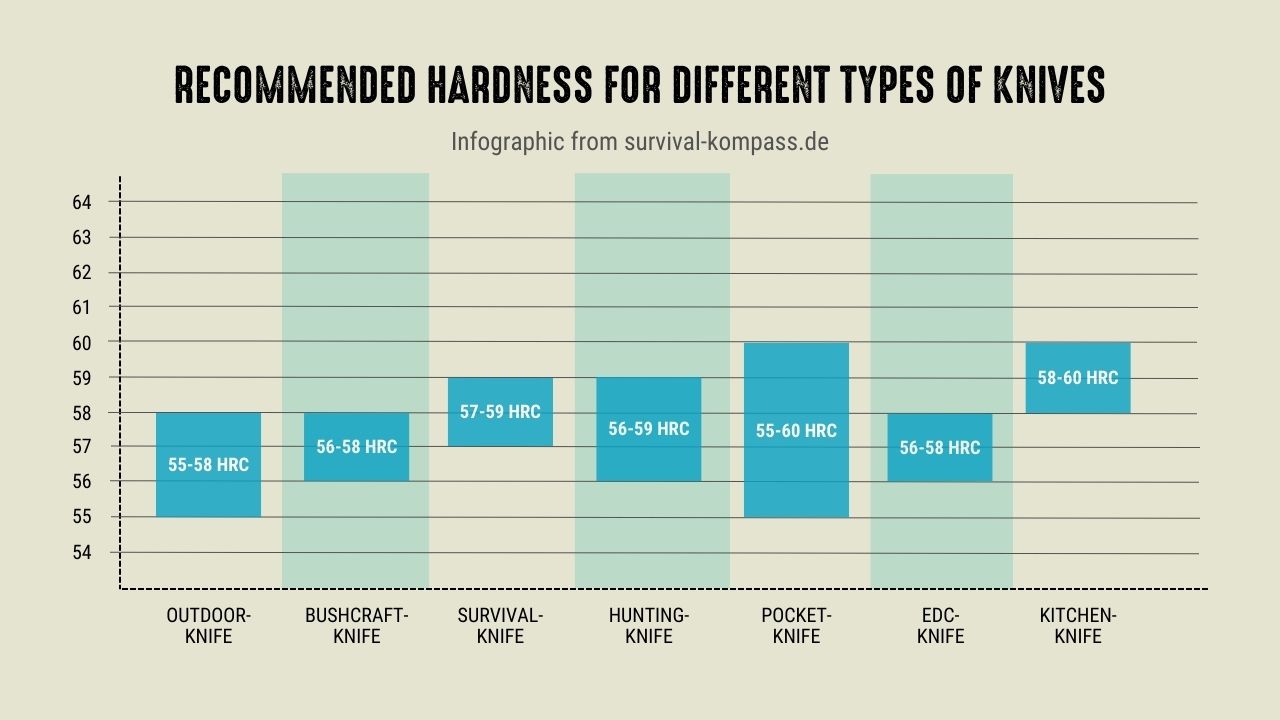
What is the Rockwell Scale?
To measure the hardness of a knife, the Rockwell scale is often used. How exactly is it measured?
The Rockwell scale is a hardness testing method used to determine the hardness of materials such as metals. It measures the depth of penetration of a diamond cone and provides the hardness in dimensions such as HRC.
For knives, the HRC scale (Rockwell C) is usually used. This scale ranges from 50 to 70, with higher values indicating higher hardness.
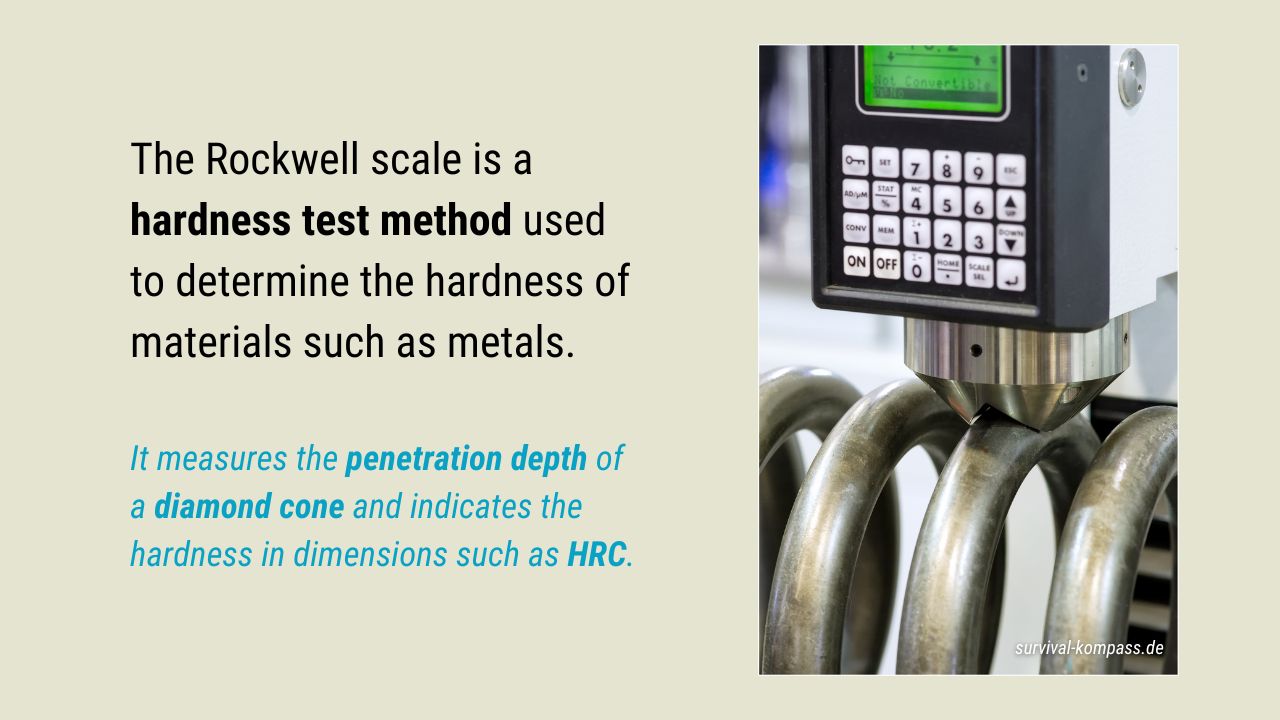
What hardness is ideal for an outdoor knife?
Outdoor knives are typically used in demanding environments and therefore need to be particularly robust. A hardness of about 58 to 62 HRC is recommended for outdoor knives.
This hardness provides a good balance between edge retention and toughness.
With this, the knives are sharp enough to cut efficiently, and at the same time resistant enough to withstand outdoor stresses.
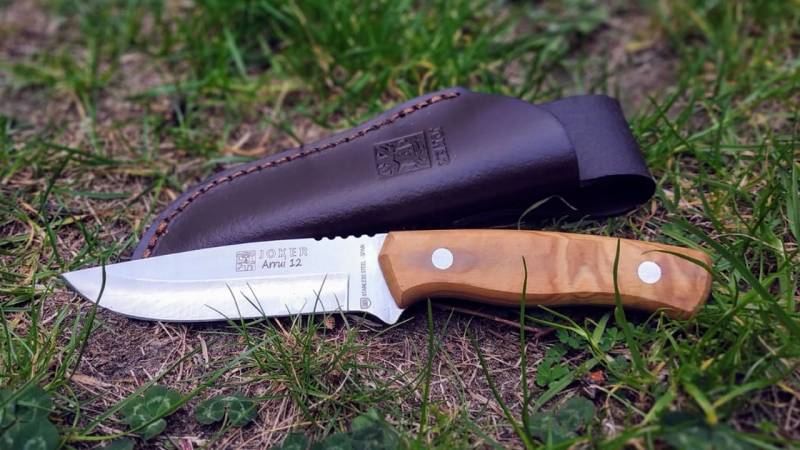
What hardness is ideal for a bushcraft knife?
The recommended hardness for sturdy bushcraft knives is about 56-58 HRC. This hardness provides a good balance between edge retention and toughness, which is important for the various tasks involved in Bushcrafting.
With this, the knife is hard enough to stay sharp, but still relatively easy to sharpen.
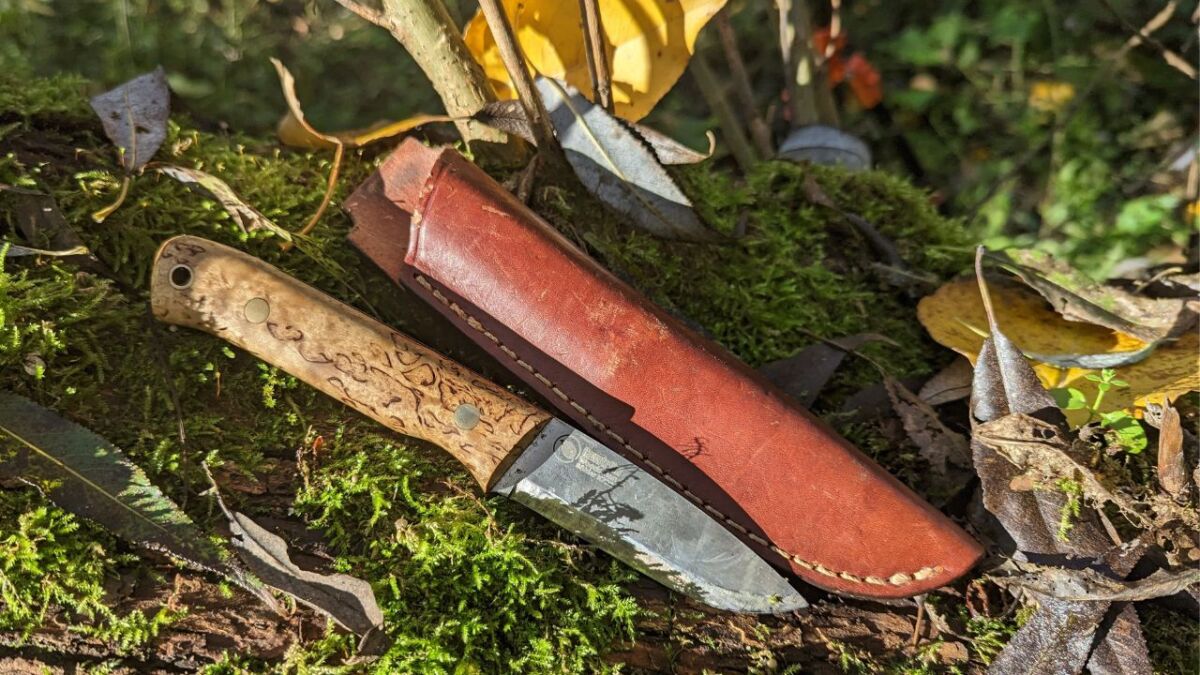
A suitable reading tip here:
Read also
Which steel is ideal for bushcraft knives? - 7 popular types of steel featured - How to choose the right steel for your bushcraft knife - A handy guide to take your bushcraft skills to the next level.
What hardness is ideal for a survival knife?
A survival knife must be a true multitasker. The recommended hardness here is 57-59 HRC.
Why? Because you have to be prepared for everything in the wilderness. Whether you're making a fire, gutting fish, or hacking through dense undergrowth - your survival knife must be up to these challenges.
This hardness provides you with the perfect blend of cutting ability and flexibility. This way, your knife stays sharp when you need it most, while also being tough enough not to break.
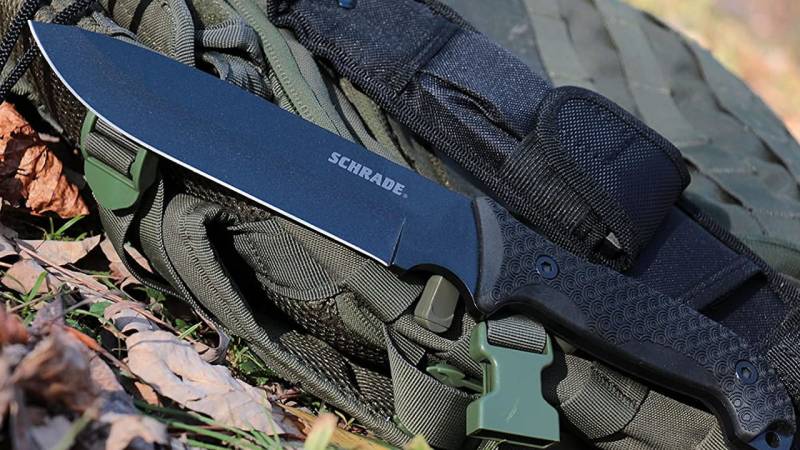
What hardness is ideal for a hunting knife?
Hunting knives must perform well both when field dressing game and when performing precise cutting tasks. A hardness of approximately 60 to 62 HRC is suitable for hunting knives.
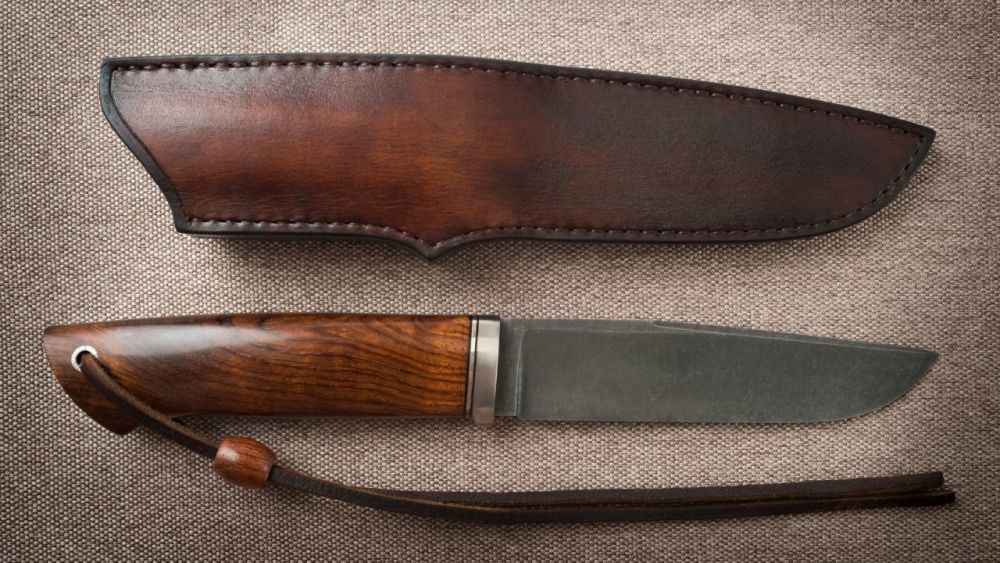
This hardness offers a good combination of edge retention and stability. A hunting knife with this hardness stays sharp and yet is robust enough to withstand the forces when field dressing game.
Read also
What is a Yakut knife - Traditional Siberian and hand-forged outdoor knives – Learn more about the traditional Yakut knife of the Siberian Yakut's, a hand-forged outdoor knife with a unique design and functionality.
What hardness is ideal for a pocket knife?
Pocket knives are small and practical tools that can be useful in many situations. A hardness of about 55 to 60 HRC is recommended for pocket knives.
This hardness enables good edge retention and ensures that the knife stays sharp.
At the same time, the knife is not too hard to be prone to breakage. Pocket knives should be easy to handle yet sturdy enough for everyday use.
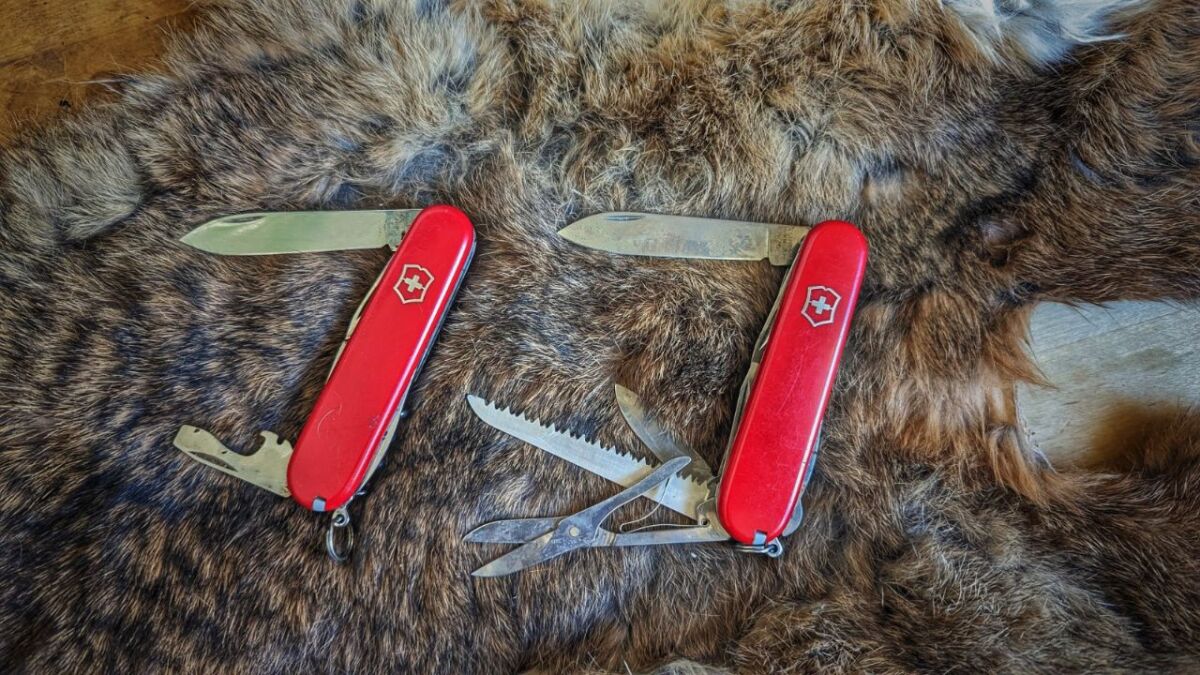
Reading tip: Find here my top 5 Swiss pocket knives and my buying guide.
What hardness is ideal for an EDC knife?
The optimal hardness for an everyday carry (EDC) knife is between 56 and 58 HRC. This provides good edge retention and corrosion resistance while still being easy to sharpen.
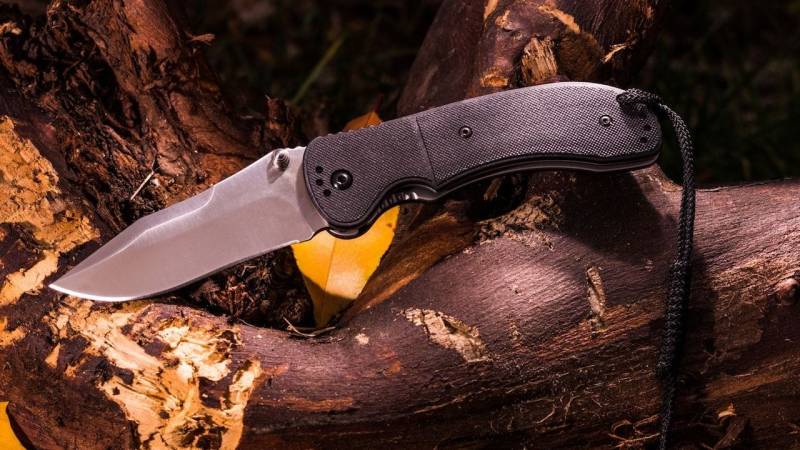
What hardness is ideal for a kitchen knife?
Kitchen knives are used intensively daily and therefore need to have a high hardness to withstand the stresses. A hardness of about 55 to 60 HRC is ideal for most kitchen knives.
This hardness enables good edge retention and ensures that the knife stays sharp for a long time. At the same time, the knife is not too hard to be prone to breakage.
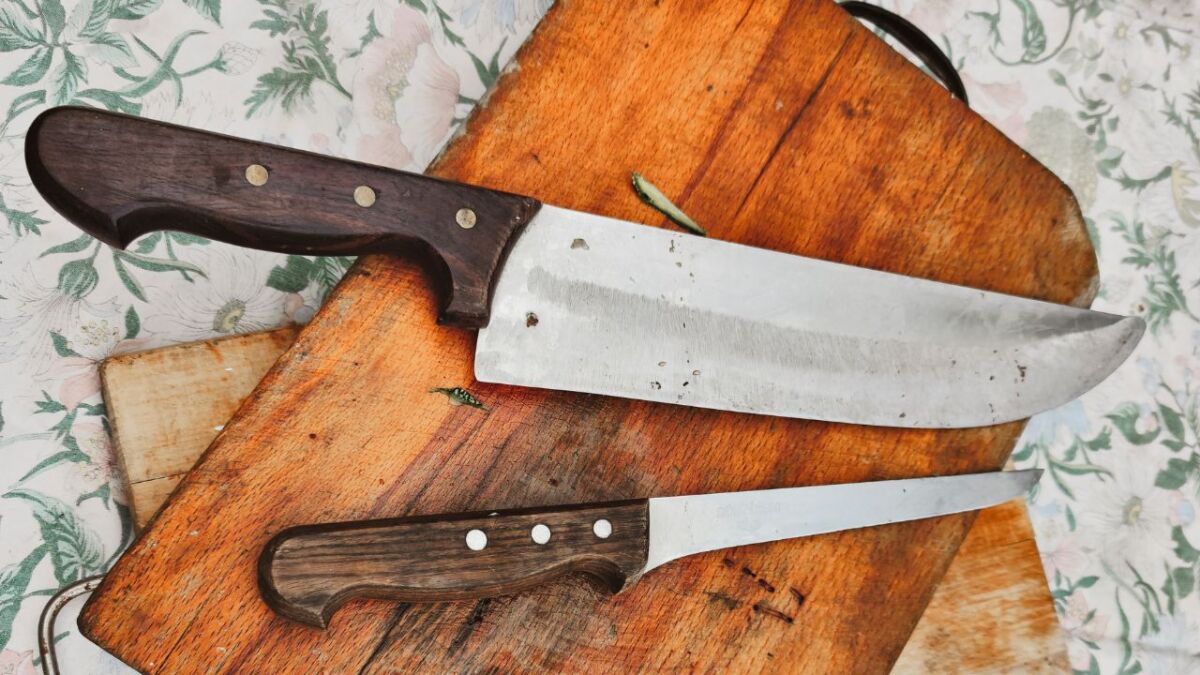
Frequently Asked Questions (FAQs)
How is the hardness of a knife measured?
The hardness of a knife is often measured using the Rockwell scale. This scale indicates the resistance of a material to the penetration of a test body. The HRC scale (Rockwell C) is commonly used for knives.
Can the hardness of a knife be changed afterward?
The hardness of a knife cannot be changed afterward. The hardness is determined during the manufacturing process and cannot be altered anymore.
Which materials have a high knife hardness?
Materials such as steel with a high carbon content, such as Damascus steel, have a high knife hardness.
These materials offer good edge retention and are capable of withstanding the demands of daily use.
Read here: What is better? D2 steel or 440C steel? - a detailed comparison
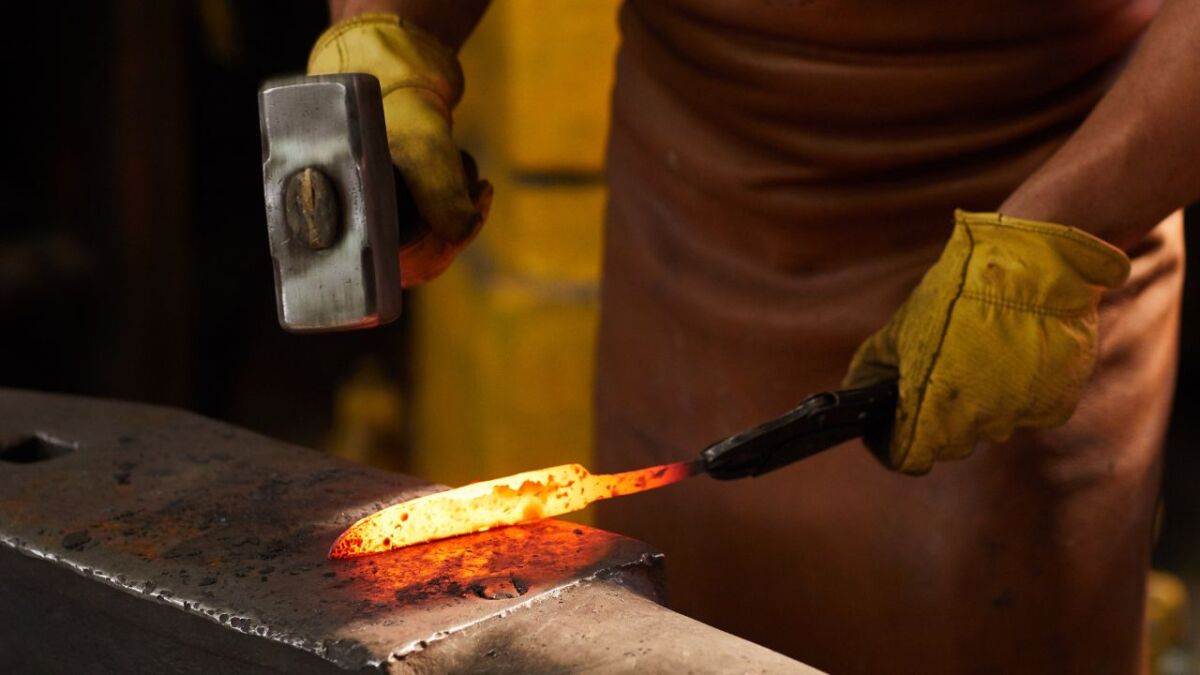
Are knives with higher hardness always better?
Knives with higher hardness are not always better. Excessive hardness can cause the knife to become brittle and break more easily. It is important to find the right balance between hardness and stability.
How can I check the hardness of my knife?
The exact hardness of a knife can only be determined using special tools and measurement methods. It is advisable to leave this to a professional.
How long does a knife stay sharp?
The sharpness of a knife depends on various factors, such as the hardness of the knife, the quality of the steel, and the usage of the knife.
A high-quality knife with the right hardness can stay sharp for a long time, but regular sharpening is still necessary.
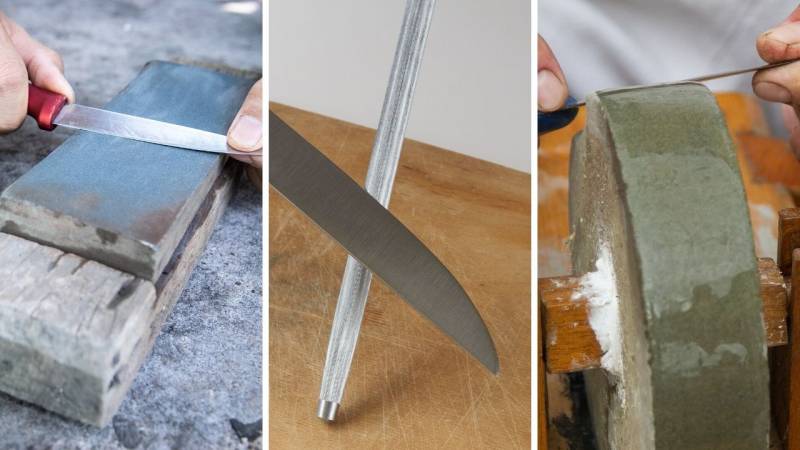
In my guides "This simple and inexpensive trick shows you how to keep your knife sharp" and "9 tricks on how to sharpen a knife without a sharpening stone" you will find even more information on sharpening your knife.
Also read
What are the common knife grinds for outdoor knives? (How to choose the right outdoor knife) – Learn everything about the most important knife grinds for your outdoor knife. This way, you will find the optimal grind for each activity such as carving.
Conclusion: The right hardness makes the master
The hardness of a knife is a crucial factor for its performance and durability
It is important to find the right balance between hardness and stability to meet the requirements of the respective application.
Whether in the kitchen, while camping, or during hunting activities, a knife with optimal hardness provides good edge retention and can withstand the demands of daily use.


Author of the guide
Martin Gebhardt
Hey, I'm Martin. On my blog, you will learn the basics and numerous details about living in the wild. I think survival, bushcraft and the good life in nature are the keys to happiness. Find me here on Instagram or on YouTube. You can find more about my mission on the About Me page.
Since this is a gear guide, here ...
🤝8 reasons to trust my recommendation
-
Practical Experience: I have tested most of the products I recommend under extreme conditions myself.
-
Independence: As a wilderness mentor, I am not tied to any specific brands - this means my recommendations are unbiased.
-
Expertise: My many years of experience allow me to understand the intricacies and details of various products that a layperson might overlook.
-
Target group understanding: I understand the needs and challenges of outdoor enthusiasts, from beginners to seasoned experts.
-
Quality focus: I attach great importance to quality and longevity. These are characteristics that are crucial in the wild.
-
Clear communication: I try to explain the pros and cons of each product clearly and understandably so that you can make an informed decision.
-
Currentness: I always keep my guides up to date and adapt them to new findings or products.
-
Community Feedback: I work in wilderness schools, teach courses myself, attend courses and am active in various outdoor and survival communities and therefore integrate the feedback and experiences of others into my recommendations.
So when I introduce the best survival knives or flashlights, you can be sure that every recommendation is based on solid experience and extensive knowledge.
Was this guide helpful?
22 people found this guide helpful.
5.00 out of 5 points (22 Ratings)
Comments (0)
This post may contain affiliate links. So if you click on the links and make a purchase, I will receive a small commission at no additional cost to you. Click here, to learn more about it.


